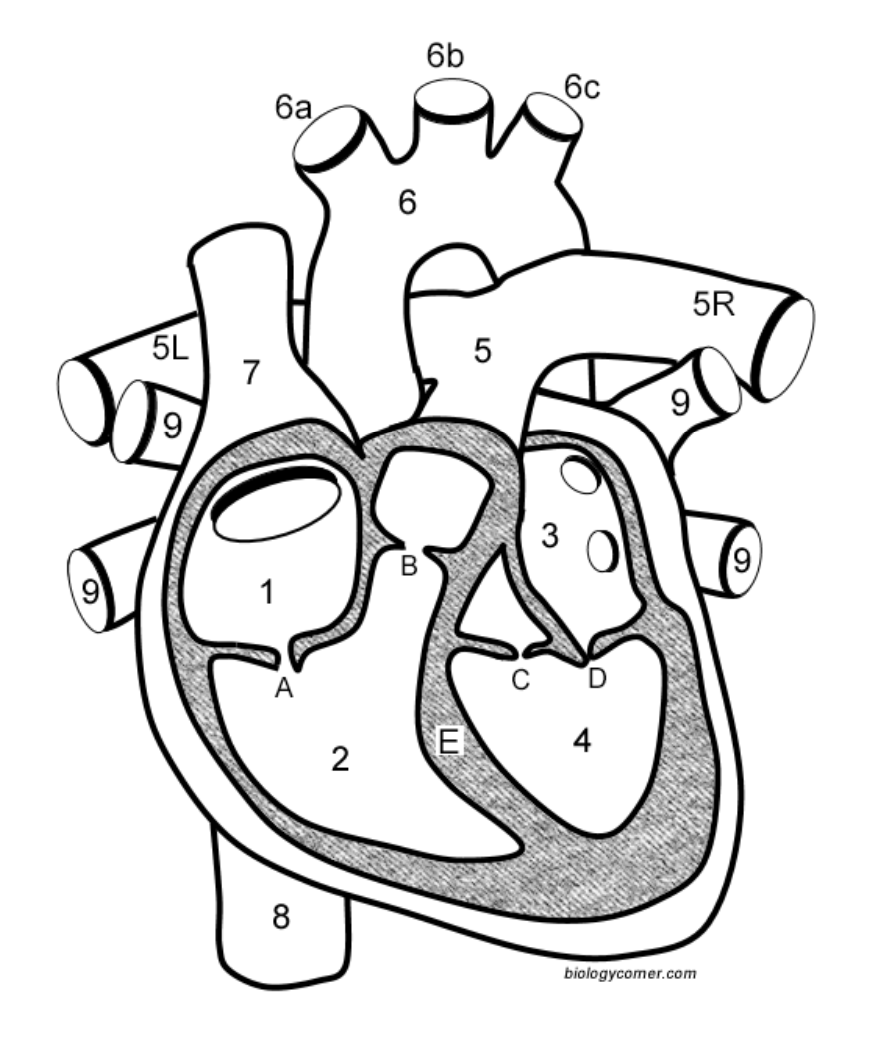Anatomy of the Heart
( \newcommand{\kernel}{\mathrm{null}\,}\)
The human heart is similar to the hearts of other vertebrates. Mammals and birds (and some reptiles) have what is known as a double-loop circulatory system, where blood leaves the heart, goes to the lungs where it becomes oxygenated and then returns to the heart before delivering the oxygenated blood to the rest of the body. The heart has four chambers, and most diagrams will show the heart as it is viewed from the ventral side. This means that as you look at the heart, the left side refers to the "patient's" left side and not your left side.

For each of the numbers described below, LABEL on the heart diagram.
Blood that has traveled through the body supplying nutrients to tissues eventually returns to the heart through the superior vena cava (7) and the inferior vena cava (8).
Blood then enters the right atrium (1) where a small contraction pushes blood through the tricuspid valve (A) and into the right ventricle (2).
From the right ventricle, blood is pushed out through the pulmonary valve (B) and into the pulmonary trunk (5). This artery branches into two arteries, the left pulmonary artery (5L) and the right pulmonary artery (5R) which will deliver the blood to the lungs where it will become oxygenated.
Oxygenated blood returns from the lungs through the left and right pulmonary veins (9) which empties into the left atrium (3).
From the left atrium, blood goes through the bicuspid valve, which is also called the mitral valve (D) and enters the most muscular part of the heart, the left ventricle (4). A powerful contraction of the left ventricle will send blood through the aortic valve (C) and into the largest artery of the body, the aorta (6).
Blood enters the aorta and will travel to the head and shoulders through three smaller arteries: the brachiocephalic (6a), the left common carotid (6b), and the left subclavian (6c). The aorta forms an arch as blood is routed to the lower part of the body where it oxygenates organs and muscles.
Read the descriptions carefully and trace the flow of blood in the heart. Use a blue arrow to indicate deoxygenated blood and a red arrow to indicate oxygenated blood.
Mitral regurgitation is a heart condition that occurs when the mitral valve does not close fully. Based on your knowledge of the heart, describe what happens to the blood of someone who has this condition. (If you are really stumped, look it up!)
When you place your hand over your heart, you use your right hand. This is because you feel your heart more strongly on the left side of your chest, even though the heart is centered in the chest cavity. Why do you feel your heartbeat more strongly on the left side?
A ventricular septal defect occurs in some newborns where the septum (E) does not close completely during development. This can cause blood to leak between the valves. Which way is blood most likely to travel? Explain.


